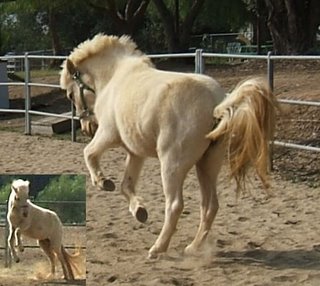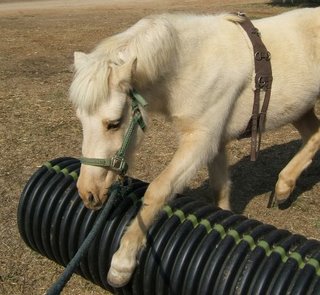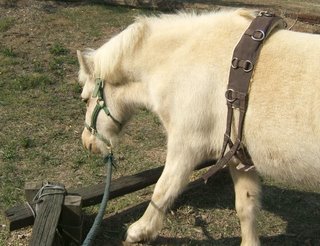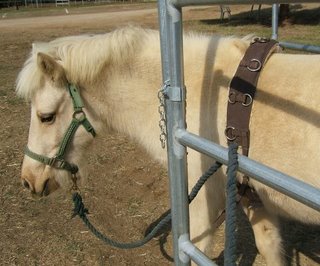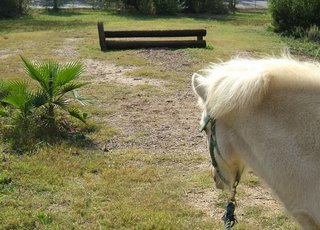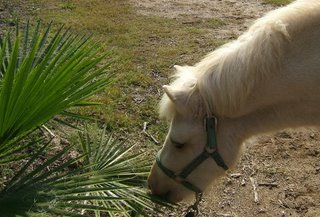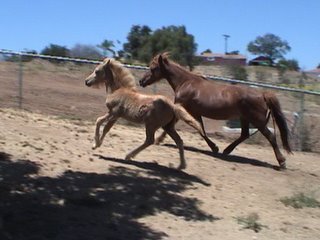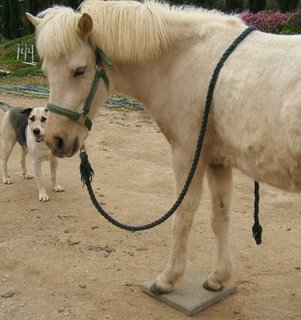Transition to Natural Trim and Good Feet
For years, our horses feet (first shod and later barefoot) were trimmed by farriers and had appeared "adequate" -- meaning no MAJOR foot problems. But the horses were tender on rocks, often a bit "off" right after a trim, and one had sporadic thrush in his very deep grooves.
I also was dis-satisfied by the farriers' explanations for why they trimmed the soles. So when our farrier moved away, and the horses needed trimming before we had located another well-recommended one, I decided to do a touch-up myself.
I went on-line for instructions and tools, and fortunately came to Pete Ramey's invaluable site http://www.hoofrehab.com; I ordered his inexpensive book ("Making natural hoof care work for you") and found it captivating! His natural method made such good sense!
I was encouraged that after my first attempt at trimming (following Pete's instructions: letting the sole be the guide, adding a generous "mustang roll", and definitely not cutting into the sole), the horses stepped out fine; and I was amazed that after only the second trimming, their heels had started to de-contract and the horses were becoming more comfortable on rocks than ever before.
Needless to say, I am still trimming!
And the horses' feet are still improving!
Icey's previously withered frogs have become wide and lush; his previously deep grooves that encouraged thrush became dry and wide as the heels de-contracted (by over an inch), and they have become much less deep as his feet have restored their natural concave shape (so never thrush anymore); the bad vertical cracks that for years had plagued Rose's feet have disappeared, and her long-term club foot has now largely recovered; and Svala's previously good feet have become true "gravel-crunchers".
After a few months of trimming, it became clear that my friend's chronic foundered horse was not being trimmed properly by her farrier, who was leaving an enormously long toe and very high heels. [That prevented her from recovering, although she had already been removed from the grass that was the primary cause of her problem.]
So, following Pete's instructions, plus invaluable advice from Paul Chapman through his Yahoo site (BareFootNaturally), I began trimming Glaesa's badly foundered feet (x-rays had showed 30 degree rotation, and the "white line" was stretched out to nearly an inch).
After taking her heels down (by nearly an inch over two trimmings) and resecting the toes of her detached hoofwalls (by nearly that much), she was walking quite happily. She soon became 100% sound and within seven months her old hoofs were completely grown out and replaced by fully attached new ones. That was pretty exciting!
Is this trimming trivial? Certainly not. But it is quite do-able!
And there are wonderful resources, including invaluable more-recent articles on Pete Ramey's web site (a must to read), great web sites of others, and excellent Yahoo groups with very supportive people. Also, there are always exciting new things to learn.
I personally could not get comfortable with the heavy farrier's rasp, but found that a cheap Stanley wood rasp from home Depot worked great for me. And through the AbrasiveHorseHoofTrimming Yahoo group I recently learned about angle grinders speeding and easing hoof trimming, especially for us middle aged ladies; after a few times using one, I have become a convert.
Let me also convey that I am not a horse-person by trade; rather I am a Professor at Johns Hopkins, where my main exercise is typing on a computer keyboard. So if I can make my horses much happier by trimming their feet in the natural way, you can too! Give it a try!
Yours, Barbara Sollner-Webb
PS: If you might like to converse about this with me, please e-mail bsw@jhmi.edu or call (410-955-6278).

